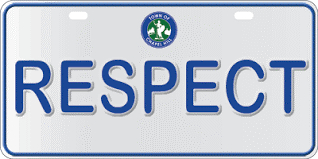
by Leisha DeHart Davis, professor of public administration and government, School of Government, University of North Carolina at Chapel Hill
At the School of Government at the University of North Carolina at Chapel Hill (UNC), we have a mission statement that includes the phrase improving the lives of North Carolinians. Our faculty and staff talk constantly about this mission: at meetings, in annual reports, during graduation ceremonies. Our School of Government mission infuses everything we do, steering and empowering us to be a force for good in the state of North Carolina.
Then there is the values statement by the town of Chapel Hill: RESPECT, which stands for Respect, Equity, Safety, Professionalism, Ethics, Communications and Teamwork. RESPECT is plastered in posters all over the town and laminated on the back of employee IDs badges.

Mission and values statements are powerful tools for local government organizations. Designed and implemented effectively, mission and values statements can guide decision-making, inspire and motivate employees, and set organizational culture.
An effective mission and values statement captures an organization’s purpose and identifies how it will pursue that mission. Because there is no standard format, you will find a wide variety among local governments. Almost all will include a purpose and values; others incorporate philosophy; still others embed a vision for the organization. Some even have multiple missions, such as the ice cream giant Ben’s and Jerry’s, which has a product mission (related to quality ice cream), a social mission (about improving quality of life), and an economic mission (pertaining to sustainable economic growth).
Some local governments have community mission statements that were designed by the governing body. This is fine, but you also need a mission and values statement that guides employee behavior, from the front lines of the organization to the manager’s office.
Maybe your local government has a mission and values statement that needs revamping. Or maybe your city or county has never had a mission or values statement and is starting from scratch. Either way, here are some tips for getting you there.
Identify why you are creating or revising your mission and values statement
Is it to inspire and motivate employees? Promote shared values? Provide common direction? Guide decision-making? Research suggests that knowing why you are creating a mission and values statement helps you to design content that achieves your intended goals.
Keep the mission short
There is no standard length, although shorter mission statements are easier to remember; some research even suggests that longer mission statements coincide with weaker financial performance and worse employee attitudes. If you have a long mission statement, look for memorable excerpts to put into practice.
Involve employees
Doing so is critical for employee buy in and effectiveness: the more employees own the mission and values statement, the more likely they are to work toward it. Employee survey data from our UNC Local Government Workplaces Initiative suggests that when employees understand the mission, they are more likely to look forward to going to work and to want to spend the rest of their careers at their city or county.

Before it developed its mission statement, the town of Zebulon, North Carolina, worked with employees to create a set of core values that would guide the pursuit of its mission. Manager Joe Moore facilitated small groups of employees, who identified the values they thought were important. Zebulon selected values that emerged as common across groups, which result in the selection of honesty and integrity, family, dependability, respect and teamwork. Zebulon values are posted in all departments, used to onboard employees, and incorporated in performance reviews of managers.
Incorporate your mission and values into organizational practice
This means talking about your mission at staff meetings, referencing the mission in performance management systems (like employee evaluations), and posting your mission in visible locations. To illustrate, the city of Albemarle, North Carolina, has a leadership and values statement—including teamwork, respect and humility—that it uses to onboard new employees, hire department heads, and recognize departments and employees in the city’s newsletter.
Think of your local government’s mission and values statement as a lighthouse that guides your organization’s path. By identifying your rationale, involving employees, and incorporating your mission into practice, you greatly increase the likelihood that your mission and values statement will be meaningful and effective.
New, Reduced Membership Dues
A new, reduced dues rate is available for CAOs/ACAOs, along with additional discounts for those in smaller communities, has been implemented. Learn more and be sure to join or renew today!
